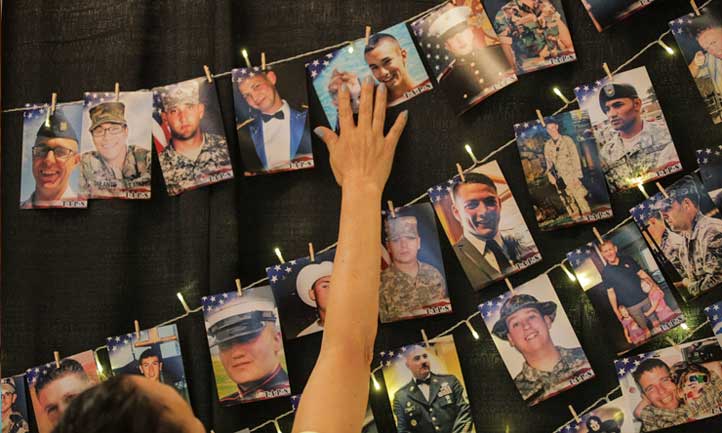Comprehensive Support for Survivors of Trauma
Author: Shauna Springer
Editor’s note: For more than 10 years, TAPS has comforted and cared for more than 11,500 surviving family members who have lost a military loved one to suicide. Each day, an average of three to four new survivors of suicide loss come to TAPS, and we welcome them with the warm embrace that can only come from those who truly understand their journey. This is the third installment in a five-part series about how best to support an individual and the community after a traumatic loss.
In light of the recent suicide deaths of survivors of the Stoneman Douglas High School and Sandy Hook Elementary mass shootings, we are highlighting four pillars of effective plans of support after traumatic loss. Our goal is to provide information to help organizations and individuals understand how to transform feelings of hopelessness into purposeful action.
There are four pillars to build a strong plan for supporting those affected by traumatic losses. Yesterday, we reflected on the need for grief support to be proactive. Today, we will look at how support must be comprehensive in order to be effective for preventing suicide.

2nd pillar: Support must be Comprehensive
In the wake of a devastating tragedy, our response plan must be comprehensive. Comprehensive support involves offering a full range of resources to meet a survivor where he or she stands. Assessment of acute risk factors, including potential suicide risk factors, is critical after a devastating loss. Care plans must be personalized and also wide-reaching enough to encompass things like clinical trauma care, professional grief counseling, peer-based emotional support and spiritual guidance and care. Various modalities of support including best practice approaches that are both traditional and non-traditional will allow survivors to find a path to healing that is most beneficial for them.
TAPS has developed a comprehensive model of care based on the best practices of supporting more than 11,500 survivors of suicide loss over 10 years. The TAPS postvention model provides hope and healing to suicide loss survivors through a three-phase approach that includes stabilization, grief work and post-traumatic growth. The word “postvention” is the act of caring for those who are bereaved by suicide. It is an intervention conducted after a suicide. The postvention model provides a roadmap to move from surviving to healing to thriving after a loss. To fully engage the model, TAPS has developed working partnerships with organizations that complement our services and provide the continuum of care that is necessary throughout the journey of healing. These partnerships are critical to addressing the varied and changing, needs of those who survive traumatic events.
Shauna Springer, Ph.D., is the senior director of TAPS Suicide Prevention & Postvention Initiatives. She is a licensed psychologist with an undergraduate degree from Harvard University and a doctoral degree from the University of Florida. She previously served as a front-line psychologist in a Department of Veterans Affairs behavioral health clinic, and has helped hundreds of warriors reconnect with their tribe, strengthen their most important relationships and build lives that are driven by their deepest values.
For More Information
TAPS Suicide Prevention & Postvention offers resources, support programs and events for military suicide loss survivors. We also offer training and consultation for organizations and providers.
